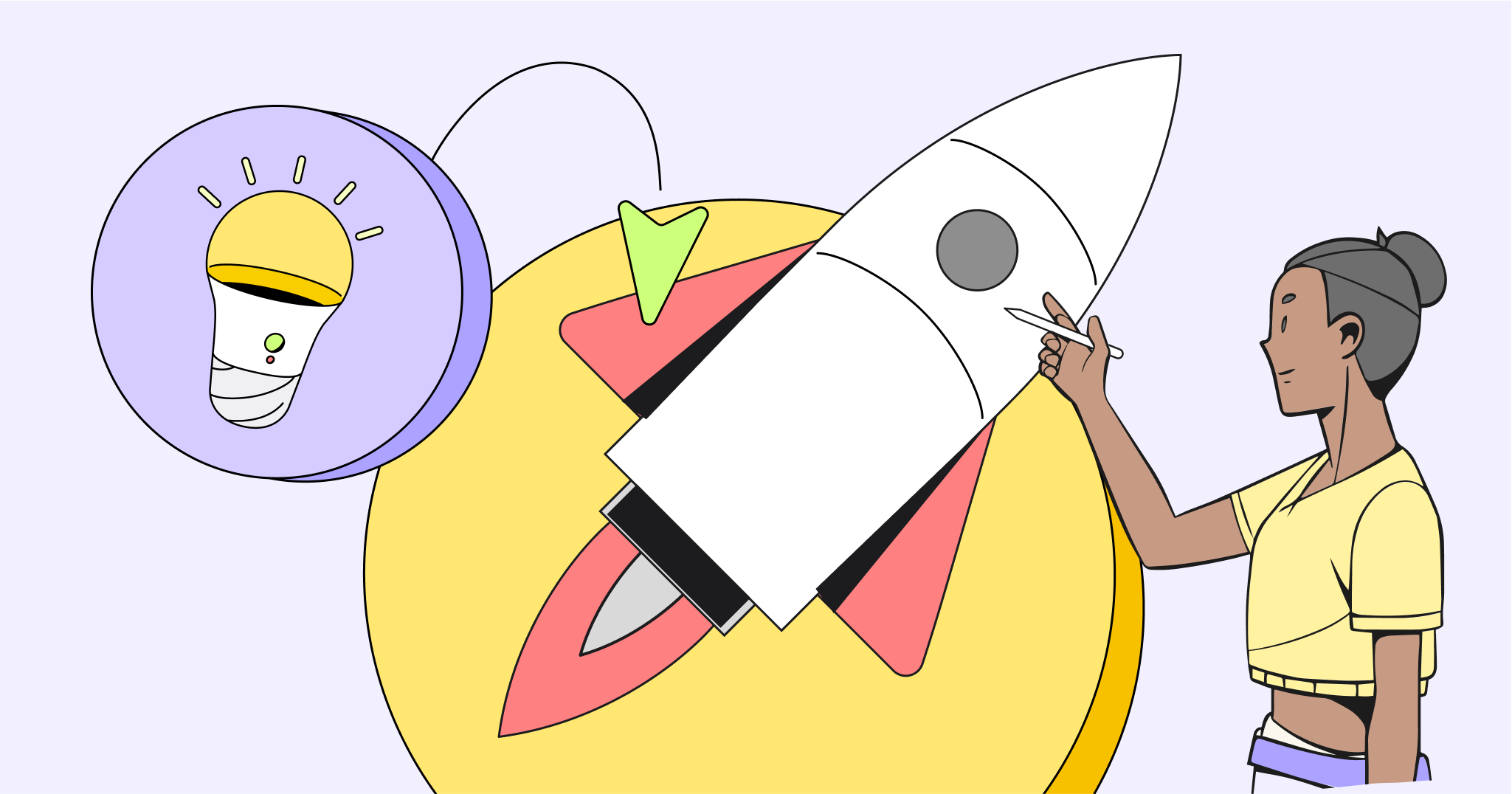Have you ever participated in a short, intense period of collaboration, where ideas build on each other rapidly, fostering a creative flow? There’s a word for it: burstiness — and it’s absolutely essential to innovation.
Miro sat down with Principal Evangelist Shipra Kayan to learn more about burstiness and gain insight into why it’s top of mind for her right now, drawing on her diverse background in product, design, user experience, and her experience as a facilitator. Having worn multiple hats, Shipra shares her distinct and creative approach to making team work better.
Hi, Shipra! Great to chat with you. I’ve been hearing about this concept called “burstiness.” What is it?
Hey, Johnathan! Great talking with you as well. So burstiness is a phenomenon that occurs when teams experience sudden, elevated interactions, often in brainstorming sessions. It’s like a spontaneous synergy where ideas flow rapidly, with team members building on each other’s thoughts in a way that feels almost electric. You can feel it in the room — a flurry of ideas where everyone’s contributions are interconnected and evolving quickly. It’s similar to a jazz band in full improvisation mode, where each musician feeds off the others to create something truly unique and creative.
I love the jazz reference! That helps paint the picture for me. In jazz or any type of group activity, a lot of time goes into making that performance sync so well. So in a business sense, how does a team get to the point where it can have those moments of burstiness?
Several key elements must be in place. First, strong relationships among team members are essential. Teams that have worked together over time and understand each other’s strengths and backgrounds are more likely to experience burstiness. Psychological safety is another critical factor: Team members need to feel comfortable sharing their ideas without fear of judgment. Leaders play a vital role here by setting a tone of openness and creativity, often by leading with humor or vulnerability to show that it’s okay to be imperfect during the creative process.
I’m glad you brought up leaders, because that brings me to my next question: How can leaders encourage burstiness without it feeling forced?
It’s important that leaders make the conditions conducive for burstiness and then step back. They shouldn’t lead discussions or direct teams down any paths. Saying their idea or ideas first is a conversation killer. That limits a team’s imagination and can make teams less inclined to share any or all of their ideas.
That’s solid advice! So you set the team up for burstiness, ideas start flowing — now, help me draw the line from this to innovation. How does burstiness contribute to innovation?
Innovation thrives on the generation of numerous ideas, and burstiness is a key driver in this process. The more ideas a team can produce, the higher the likelihood of uncovering a truly groundbreaking concept. Burstiness helps teams push beyond the obvious solutions, diving into a deeper pool of possibilities that can lead to innovative outcomes. It’s in these bursts of creativity that teams often connect ideas from disparate contexts — like combining concepts from the postal system and movie rentals to create Netflix, for example. The chaotic, rapid-fire exchange of ideas during burstiness can result in the emergence of unique, innovative solutions.
Are there specific environments or team sizes where burstiness is more effective?
Burstiness is most effective when you keep things small: typically 10 members or fewer, where there’s already a foundation of trust and familiarity. This setting allows for more intimate, intense exchanges of ideas. While burstiness is particularly valuable in creative industries, such as writing or music, it can also be applied to problem-solving in any field, from HR to IT. Any situation that requires brainstorming can benefit from burstiness, provided the environment supports it.
As you know, there are a lot of great ideas out there for how to work smarter and faster, but doing it isn’t always as easy as flipping a switch. So tell me about the challenges that might prevent or hinder burstiness.
So true. Several challenges can prevent burstiness from happening. One of the biggest obstacles is leadership. If a leader dominates the conversation or dismisses ideas too quickly, it can stifle the creative energy needed for burstiness. Also, not all team members are equally comfortable speaking up, whether due to introversion, language barriers, or other factors. Tools like Miro can help overcome these challenges by allowing team members to express their ideas visually and collaboratively, creating a more inclusive environment where burstiness can thrive.
And what about remote or hybrid work environments? Can burstiness happen with those teams?
Absolutely. While burstiness often happens naturally in face-to-face settings, remote and hybrid teams can also achieve it with the right tools and practices. Platforms like Miro are instrumental in this regard because they allow team members to collaborate in real-time, even from different locations. Features like digital whiteboards enable teams to share and build on ideas quickly, which can mimic the spontaneity and energy of in-person interactions.
So when people are writing their ideas on a Miro board, you could have written your idea and then seen all of these other ideas that could then spark even more ideas. Even if you’re remote or in a hybrid setup, creating regular opportunities for teams to connect on a personal level can help build the relationships and trust necessary for burstiness to occur.
Shipra, this has been a really insightful conversation! My last question: Coming up with ideas is fun, but then you have to make something out of them. So what should teams be doing after a period of burstiness?
Burstiness should be followed by a period of reflection and synthesis. It’s during this time that teams can sort through the ideas generated, grouping them into themes or clusters and identifying which ones have the most potential. This slower, more deliberate process is essential for making sense of the creative chaos that burstiness produces and determining the best path forward.
Perfect! Thank you, Shipra!




